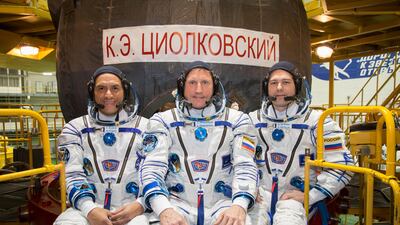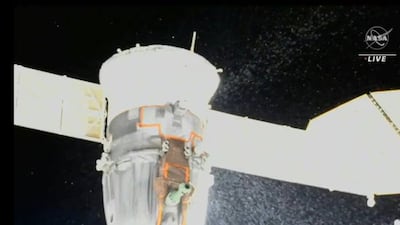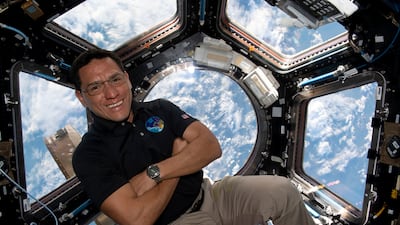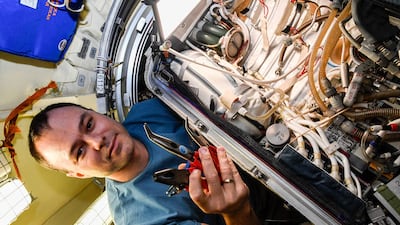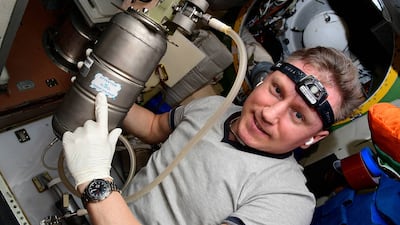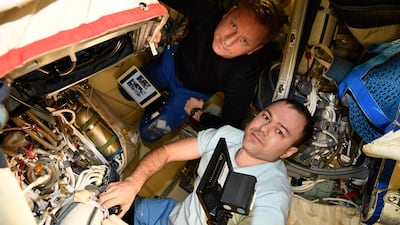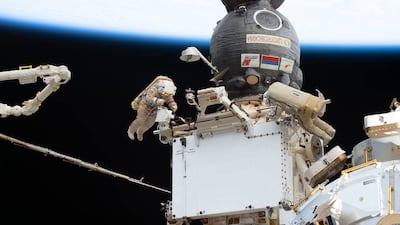Astronauts who have been stuck in space for a year have tried out a lower-body pressure suit to help them re-adapt to gravity more quickly once they land back on Earth on September 27.
Nasa's Frank Rubio and Russia's Dmitry Petelin and Sergey Prokopyev have been living and working aboard the International Space Station since September 21, 2022.
They were meant to return six months later, but their Russian Soyuz spacecraft was destroyed – reportedly from a meteor strike – causing their mission to be extended by another 180 days.
The astronaut and cosmonauts are spending their remaining time preparing for the journey home, including ensuring their rescue Soyuz craft and spacesuits are ready.
“The trio is now turning its attention to parachuting back to Earth inside the Soyuz MS-23 crew ship on September 27,” Nasa said on Monday.
“The threesome joined each other midday on Monday and checked out the Sokol launch and entry suits they will wear inside the Soyuz during the ride home.”
Lack of gravity for a year
Mr Petelin and Mr Prokopyev tried on the Russian Chibis suit to see if it would help them get reaccustomed to gravity quicker once back on the ground.
Astronauts who spend long periods in space struggle to walk right away because body fluids tend to pool in the upper body while in microgravity conditions.
The fluid shift causes the lower part of the body to become weaker, with muscle and bone density loss.
Once astronauts are back on Earth, gravity helps pull the fluids back down, with astronauts usually walking normally again within a few days.
The Chibis suit applies lower body negative pressure to stop fluid from pooling in the upper body.
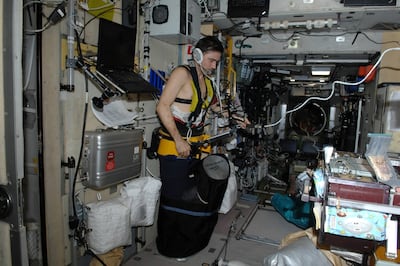
“Chibis works like a household vacuum cleaner to suck astronauts into the pants, load the bottoms of their feet, and expand veins and tissues of the lower body,” said Nasa.
“By sucking blood and other body fluids back to the lower body, swelling in the face and elevated pressure in heads of astronauts may be avoided.”
The rubber suction pants were first used in space flight during the days of the Salyut space station, operated by the former Soviet Union in the 1970s and 1980s.
Now it is regularly used in missions by cosmonauts to help them prepare for their return to Earth.
Astronauts are also required to exercise for at least two hours daily on the ISS to make sure body fluids flow properly and to maintain strong muscle mass.
Long-term health effects associated with extended space travel include impaired eyesight and loss of bone density.
Dr Anil Grover, a specialist in internal medicine with Prime Hospital in Dubai, told The National in an earlier interview that astronauts can experience vision changes.
“The fluid shifts affecting the eyes can cause changes in vision or cause cataracts,” he said.
“The loss in bone density, even if partially recovered, can make astronauts more prone to fractures later in life, hence the need [for] regular exercise in space.”
Nasa astronaut Scott Kelly spent a total of 520 days on the ISS, with a consecutive 340 days in 2015 to 2016.
His health was compared with his twin brother on Earth.
It was found Mr Kelly's eyesight, height and health had been affected by zero gravity.
His heart shrank by 25 per cent after a year on board the ISS. Nasa researchers found he had grown 5cm and was taller than his identical twin Mark, who is also an astronaut.
Mr Rubio has now set the US record for the longest space flight and will have completed 371 consecutive days in space once he is back.
He will take part in an extensive rehabilitation programme to help him readjust to gravity.
Russian cosmonaut Valery Polyakov, who died last year, achieved the world record for the longest single stay in space. He spent 437 days on the Mir space station.
